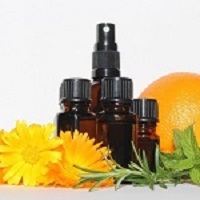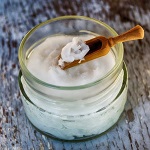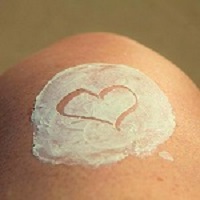
If you have read Methods and Benefits of Aromatherapy, the next step is to have a good understanding of safe healing with essential oils. I am not a doctor or an aromatherapy practitioner, but I have been using essential oils for a little while now, having educated myself on the risks, hazards and safety guidelines.
Essential oils are highly concentrated with natural chemicals and are extremely potent, so it’s important to be aware of and follow the safety advice. If used wrongly, essential oils can be harmful and may cause some serious damage. But don’t let that put you off. If practiced responsibly and sensibly, aromatherapy can be a great way to achieve health and wellbeing, whether as a professional treatment or a D.I.Y. home fix.
The following passages should be a good starting point for understanding the safety basics – including why you should dilute essential oils, different methods of dilution, the importance of oil quality and purity, plus some general guidelines. I have also listed some resources for further reading and information towards the end of this post, so be sure to check those out as well.
——————————————————————————————————————–
Is It Safe To Apply Neat Essential Oils?
There’s a great deal of disagreement amongst practitioners and indeed within the industry as a whole as to whether or not essential oil should be applied neat to the skin.
“The most common adverse reaction experienced by hundreds, possibly thousands of people every year, is a skin reaction, and the most common cause is using an undiluted essential oil.” (Source : Tisserand Institute.)
In addition to skin reactions, in extreme cases there’s a risk that the bodily organs and / or systems may be toxically affected causing neurological disorders, increased production of cancerous cells, liver damage and more, but these are extreme cases and are pretty rare, usually following long term use.

Skin reactions include irritation (such as rashes or burns) and sensitization (an allergic reaction which once developed is usually permanent.) The use of undiluted essential oils can also amplify photosensitivity. This is where exposure to U.V. rays brings on symptoms similar to sunburn but which can be much, much worse. These symptoms can last for a couple of days or may cause long term skin damage. (Certain oils should not be applied before exposure to U.V. light – even if diluted. These include – but are not limited to – lemon, lime, grapefruit, orange and bergamot.)
Some argue it’s O.K. to use neat oils on small areas to relieve minor burns, insect bites and stings, or to help clear superficial skin infections, spots and acne. Other uses include for cold sores, warts, headache and migraine. It’s generally agreed that if you do decide to use essential oils neat, it should be under the supervision of a professionally qualified practitioner, and for no longer than 3 days at a time.
So the choice is yours, but be aware of the risks. If you do decide to go down the undiluted route there are some oils that should NEVER be used neat. These include thyme, oregano, cloves, lemongrass and cinnamon, but there are a whole lot more on the list, so be sure to check first. Personally, I would rather err on the side of caution so I always dilute essential oils for topical use.
How To Dilute Essential Oils?
There are many ways to dilute essential oils, different methods being more suitable to some applications than others.
Carrier Oils
As well as for essential oil dilution, carrier oils are used to aid topical absorption i.e. they help to carry the essential oils through the skin. The carrier oils themselves have therapeutic benefits, so it’s useful to understand what they are so you can pair the right carriers with essentials for maximum advantage.
It’s always worth buying unrefined oils. They’re a little more expensive but the oil is extracted naturally, which means better quality as the nutrients remain intact. Listed below are three popular and versatile carrier oils, but there are many more available…

Coconut oil is a great all-rounder; it contains antioxidants, has antifungal properties, is anti-inflammatory and antibacterial. It’s great for deep moisturisation of the skin, hair and nails. Opt for the version that’s solid at room temperature – (great for making lip balm) – as the liquid version is more highly processed.
Jojoba oil – which is technically a liquid wax – is extremely good for nourishing the hair and for general moisturisation. It helps to clean pores and remove impurities when used in massage or facial care, with the anti oxidants alleviating acne and minor skin conditions. The anti-inflammatory properties can be used to relieve pain and reduce swelling.
Sweet almond oil is high in antioxidant vitamins A and E and contains fatty acids, protein and zinc. These properties combined are beneficial to the skin in a number of ways including reducing U.V. damage, protecting the skin, moisturising, nourishing and soothing the skin as well as helping to repair the collagen layer. Sweet almond oil is also great for the hair and nails.
——————————————————————————————————————–
Emulsifiers
As you are no doubt aware oil and water don’t mix, so when preparing certain aromatherapy treatments you will need to use an emulsifier as a “go-between” to allow oil and water molecules to combine.
To enjoy an aromatherapy bath you can use shower gel or body wash to help fully disperse the essential oil as they contain emulsifiers. As a general guideline (source : Tisserand institute) mix 5-20 drops of essential oil with 1 tablespoon of the product then add to the water just before you get in the tub.
However, if you are new to essential oils or are trying a new mix, it’s wise start small e.g. 1-2 drops per tablespoon, and build up from there. Also, please note that some oils require higher dilution than others – so check individual oil recommendations before any application.
(Note, carrier oil can be used in the bath – it will dilute essential oils but will not disperse them in the water. This is fine if you want the oily bath to treat dry skin for example, but in order to avoid slipping, be careful when getting out of the bath and make sure it’s cleaned properly before next time. Dilution as above, mix well and add to the water.)
Solubol is another option – it’s not available over the counter but can be easily ordered online. It allows for complete dispersion of essential oils into water and is therefore good for a number of uses including for bathing, preparing a compress, making body sprays or air cleansers. Follow the manufacturers instructions regarding mixing and dilution guidelines.
Other Dilution Methods

You can mix essential oils with lotions or creams as part of your skin care routine. The best option is to buy unscented so it doesn’t interfere with the aromatic properties of your chosen oil. Again, go organic so you can be sure of quality and purity, and chose a product that was made with essential oil mixing in mind. Follow manufacturers guidelines for dilution and storage.
Another option is pure grain alcohol, or ethyl alcohol. You can get different concentrations of ethanol within the alcohol, but you should ideally use 190 proof which contains 95% ethanol. This will not only kill bad bacteria but will prevent further growth making it ideal for air cleansers and the like. First the essential oil is mixed with the ethyl, then added to distilled water. Suggested dilutions are approximately 2% oil / 25% alcohol / 75% water, but double check according to your chosen oil.
Oil Quality
When you choose an essential oil supplier, the grade of the oil doesn’t only affect the therapeutic benefits. If the oil is below par, it increases the risk of adverse reaction. You can choose to buy organic or non-organic (a.k.a. conventional) essential oils. If an oil is organic, it should be certified as such, which basically means the plant it was extracted from was grown naturally, without pesticides; this is the recommended option.
The U.S.D.A. (U.S. Department of Agriculture) and The Soil Association are the leading organic certifying bodies in the U.S. and the U.K. respectively.
Other factors affecting quality include whether or not the plant was grown indigenously, how it was harvested, the time frame between harvest and distillation and how the oils are stored prior to being sold.
You should also strive to use only pure essential oils, that is non-adulterated oils, with no “fillers” added. Some manufacturers may combine with cheaper products such as other oils, synthetic products or carrier oils so double check the ingredients. If an oil has been G.C. / M.S. tested (Gas Chromatography / Mass Spectometry), it has been tested for which components it contains and at which percentage.
It’s encouraging to see these test have been carried out but they don’t 100% guarantee purity. Also, please be aware that if you see “pure grade” or “therapeutic grade” on essential oil labels, it doesn’t necessarily mean the oil is good quality.
Making sure you’re buying and using the best quality oils is difficult, but as well as following the above guidelines, a good rule of thumb is to look for suppliers / manufacturers with a good reputation who have been supplying the aromatherapy industry for some time.
——————————————————————————————————————–
General Safety Guidelines

Before using essential oils on or around babies, children, pregnant or breast feeding women, the elderly and infirm, animals or those with a health condition, seek medical advice first. Some oils are totally unsuitable for certain conditions, others may need a higher dilution. A good aromatherapist should always consult with you prior to treatment to be certain that the essential oils or blends are suitable for you personally. If there’s no form of consultation it may be wise to find a different therapist.
Before using an essential oil for the first time, it’s a good idea to carry out a skin patch test first. Results aren’t 100% foolproof but the severity of reaction may be reduced if you are allergic. To do the test it’s generally suggested that you mix a drop of essential oil to a teaspoon of carrier oil, mix and apply to a small, clean area of skin on the inner arm. This area should be kept dry. An adverse reaction will usually make itself known within 48 hours. If you have a nut allergy, certain carrier oils may be unsuitable. Check first with your doctor.
Remember that some oils require a higher dilution than others. Always check before using. With any oil, it’s advisable to start small and build up from there gradually.
Avoid contact with the eyes, ears and genitals. Always wash your hands after applying essential oils.
Keep oils well out of reach of children. Keep away from naked flames. Store in a cool, dark place and be aware of shelf life / use by dates.
Resources For Further Information
Please remember I am not a doctor or qualified practitioner, and although I have researched aromatherapy for my own purposes, it’s important for you to carry out your own research (and / or consult your doctor) in order to make the most informed decision possible about using essential oils.
Visit these websites for further online research and information :
www.tisserandinstitute.org – Tisserand Institute : Robert Tisserand is a global leader and trusted source in the field of aromatherapy, with a particular focus on safety. The website has some good free resources such as a mini-course and infographics.
www.a-t-c.org.uk – The Aromatherapy Trade Council (A.T.C.) : The A.T.C. was the “first self-regulating and authoritative body for the U.K. aromatherapy trade.” Some interesting information including safety, quality, laws and regulations.
www.naha.org – The National Association for Holistic Aromatherapy (N.A.H.A.) : A non-profit organisation providing general information including safety, careers and further resources.
See also Aromatherapy : A Complete Guide to The Healing Art and Essential Oil Safety for reviews on 2 of my recommended books. The first is great for beginners. The second is geared more towards the professional, but have a look and see what you think.
In Summary
The purpose of this article was to give you an overview on some of the safety basics of essential oils such as using neat, dilution options, oil quality and some general safety pointers. However, the safe use of essential oils is such a vast subject and simply cannot be covered anywhere near fully in just a few paragraphs.
I hope you find the above links useful in your quest for further information. There’s a lot to take in when starting out with essential oils, but don’t let that put you off. If you take it slowly and make sure you’ve double-checked application and dilution guidelines whenever you use a new oil or application, you can really start to enjoy the benefits of some of mother nature’s finest gifts.
Please leave any comments or feedback below. I’d love to hear from you.





I found your article very interesting! I am always looking for new ways to treat my ills naturally! I have heard of aromatherapy and even met a therapist while I was driving for Uber! the aromas of the oils he had with him where amazing!
But when I ask for his prices on treatment where a little pricey for me! It never occurred to me that I could treat myself! so I want to thank you for the info!
tell me are there oils that can be found to treat aging and or wrinkles or at least lessen the effects?
Hi Robert, thanks for your feedback. I’m really pleased you enjoyed the post. There are a number of oils that help to reduce the appearance of wrinkles and can help to slow down the ageing effects on our skin, although none will eliminate wrinkles completely. Clary sage is one – mix with a carrier and apply to the skin morning and night. You could also try lemon oil, but as with any citrus oil, your skin will become super-sensitive to UV rays for a few hours after application, so perhaps apply in the evening only. Another excellent oil for the skin is frankincense. This works on wrinkles and age spots as well, and has anti-inflammatory and anti-infectious properties. As always, carry out a patch test first, avoid contact with the eyes and never apply neat oils to the skin. Good luck!
I have been exploring more natural ways to treat myself of headaches, dry skin, stuffiness etc. and have been experimenting with some essential oils. I had no idea that they could be dangerous to put directly on the skin. I thought it is natural so it was harmless. I am grateful to have come across your post to tell e otherwise.
I am not sure why I never thought of putting it together with lotion or bodywash. What a great way to incorporate the oils.
I have been suffering from a week long headache – do you have any suggestions? I have been using peppermint oil in a diffuser and it seems to be helping a bit.
Hi, thanks for your feedback – I’m pleased you found this article useful. So many people aren’t aware of the risks associated with essential oils. They are natural but potent, so it’s really important to know the do’s and dont’s. Peppermint is good for headaches – try putting a little on the temples and / or forehead next time and see if that helps. (Diluted of course!) Also, lavender is good for headaches and can help you relax if you’re feeling stressed. Another is rosemary. As well as easing pain it has anti-inflammatory properties and can improve circulation as well. These also can be used in a diffuser or applied to the temples or forehead. I hope this helps, let me know how you get on.